Basecoat Basics: Choosing the right color
So, you’ve chosen the perfect blend for your space…but don’t forget that what’s underneath is important too! Basecoat colors can greatly affect the finished appearance of your FLAKE floor. Even full broadcast applications can leave small gaps for the basecoat to peek through and affect the overall color of your floor.
To best showcase the colors in your floor, pick a basecoat that is similar in color and tone to the most prominent color in the blend. For instance, if working with a dark blend like FB-715 Nightfall, it would be best to choose a neutral to dark gray basecoat color. Or for a majority brown blend like FB-517 Outback, choose a tan basecoat. For best results, choosing a base that strongly contrasts the blend is not recommended.
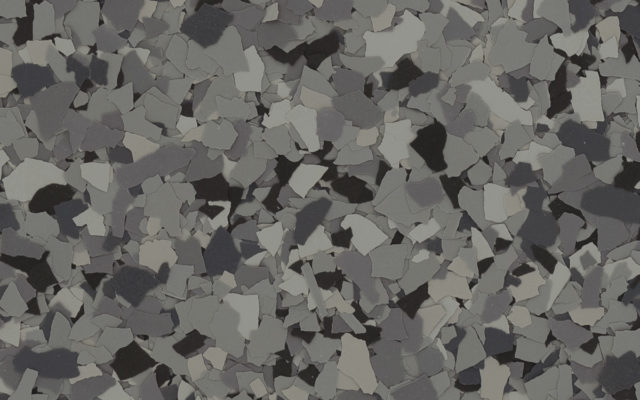
FB-715 Nightfall

Gray Basecoat
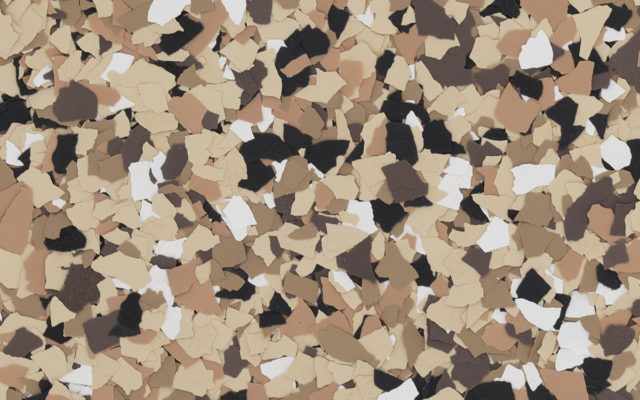
FB-517 Outback

Tan Basecoat
However, for blends that contain many different colors, it may not always be obvious which base color will work best. In these cases, preference on the overall color of the finished floor should be the deciding factor.
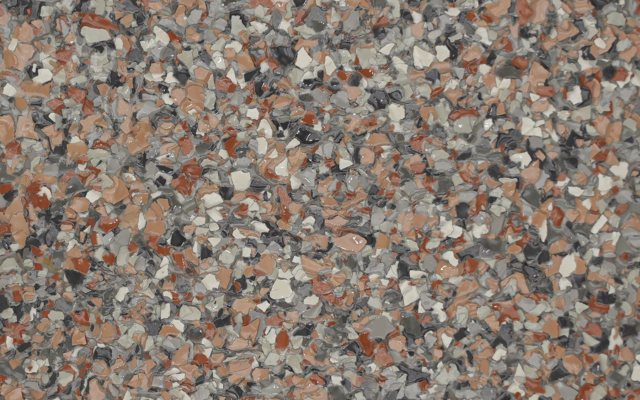
FB-968 Waxwing on gray base
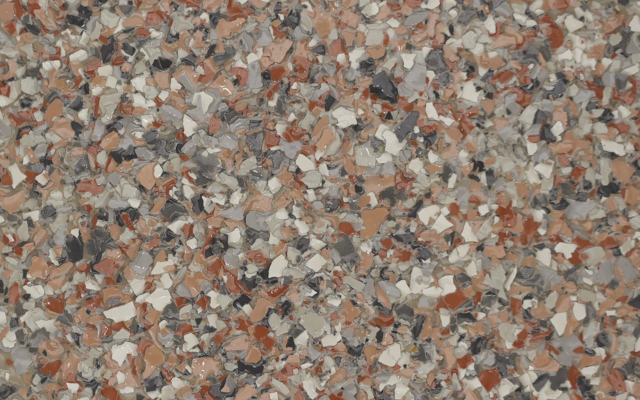
FB-968 Waxwing on taupe base
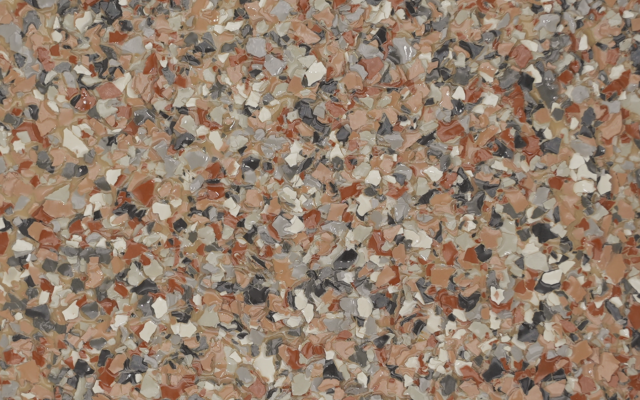
FB-968 Waxwing on tan base
Take a look at the photos above. You may be able to see the slight difference in the overall color of the floor in each photo. Even though the same blend is being used, the overall color changes with each basecoat. Because both gray and tan are present in the blend, any of the three basecoats could work—it all depends on preference.
Though any of these basecoat options would work, in the taupe option, you can see the widest range of colors most clearly. The dark gray isn’t lost in the gray basecoat and the tan isn’t lost in the tan basecoat. Because taupe is neutral and matches the overall tone of the blend, the colors are equally balanced.

Taupe Basecoat
For very light blends with a majority white or light gray FLAKE—a light basecoat is highly recommended. This will ensure the colors in the blend remain bright in the final floor.
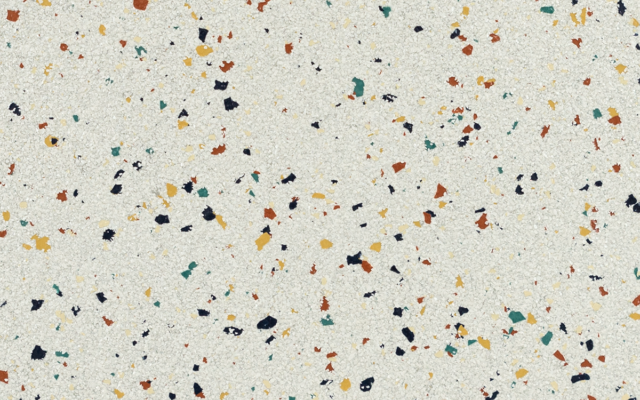
FB-4203 Jawbreaker on gray base
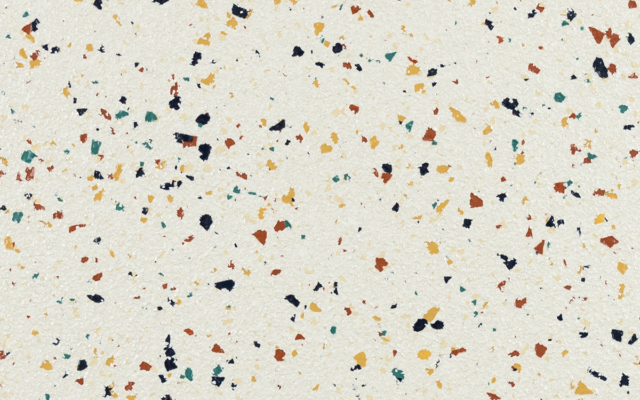
FB-4203 Jawbreaker on white base
In the example above, FB-4203 Jawbreaker is shown on both a gray base and a white base. The gray base dulls the overall vibrance of the blend and the pops of color do not appear as bright. Our recommendation for Jawbreaker--and blends like it--is to use a light basecoat like white or very light gray to maintain the original vibrancy of the colors.
To summarize, a good rule of thumb when choosing a basecoat color, is to choose a color similar in color and tone to the most prominent color in the blend being used. If a blend could work with more than one basecoat color, make your choice based on the preferred appearance of the final floor. When in doubt, preparing finished samples on different basecoat colors can be a great way to determine how the colors will look in the final floor.
